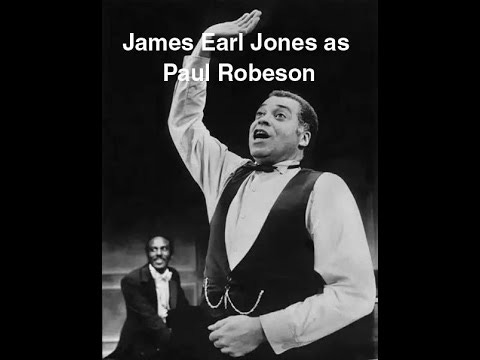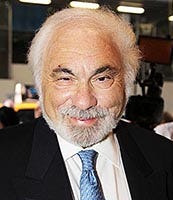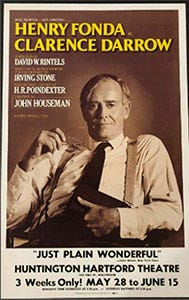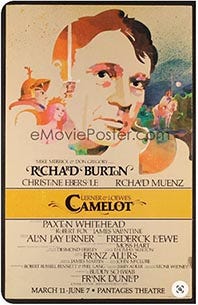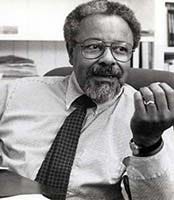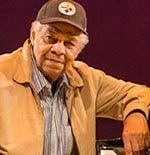James Earl Jones as Paul Robeson- Updated and Expanded
I am updating this post putting in more information and including a YouTube video of the Paul Robeson performance by Mr. Jones and video of the Robeson Peekskill riot
The above is a video trailer I just created for this website
It had to be around 2:30 a.m. when our phone rang. We were living in a loft on East 17th Street near Union Square. My wife and I were sound asleep. I picked up the phone to hear the voice of Darth Vader—literally. It was no dream. James Earl Jones was on the phone.
He apologized for waking me. He was on the West Coast and asked me if I wanted to stage manage his new show, Paul Robeson that was beginning rehearsals in Los Angeles.
Although it seems like a no brainer, it really wasn't. I had earned my M.F.A from NYU School of the Arts (now Tisch) the previous year. My wife, Christine, and I were living in a terrific space where I had my own 60 seat theater in the back.
I had a great job at ABC-TV on W. 66th as a video engineer. I was working with the top directors in the TV industry, a position to which I aspired. Plus, I was making some very nice money doing it.
I met Mr. Jones while at NYU. I was in a design class when a messenger walked in to announce that they needed a stage manager for a show that James Earl Jones would be guest directing. He had gotten a lot of attention and a Tony Award for The Great White Hope, on Broadway and then later did the film.
There were rumors that he was the voice of Darth Vader, but he hadn't admitted to it yet. I thought his would be an excellent opportunity to work with a professional on his level. I volunteered.
I staged managed a show for him while he was a guest director at NYU, and I impressed him enough that he offered me the stage manager job on his next show.
The first Broadway show he did was Of Mice and Men. Unfortunately for me, the stage manager had to be his understudy, so I missed that one. Frankie Faison, another classmate of mine, of The Wire fame got that one. On the next one, Paul Robeson, he didn't forget me. So gave the wife a kiss goodbye and caught a non-stop to L.A. to begin rehearsals.
It was the first time I was in L.A. Big difference from grungy 70s Big Apple.Every day is the same day. Sunshine, 80-90 degrees. Great tans all around. Sandwiches with bean sprouts. We rehearsed in a building with four floors of rehearsal studios. Hot dancers in tights working out routines for TV. Everyone is in show biz or aspiring.
Now I got to meet everyone.
Don Gregory was the producer. A tall, well-dressed man guy with a beard and white hair, a Kenny Rogers look alike. He looked exactly like you would expect a producer to look. His son David Gregory grew up to be the moderator of NBC’s Meet the Press. Don made his reputation early producing his first stage play; a one-person show starring Henry Fonda entitled Clarence Darrow.
He followed up with The Belle of Amherst, starring Julie Harris directed by Charles Nelson Reilly. Later on Don staged revivals of Camelot with Richard Burton and My Fair Lady with Rex Harrison He also produced the hugely successful Harvey. He passed away in 2015. Don Gregory obituary
Charles Nelson Reilly had successfully directed the Belle of Amherst for Don. Charles. He flitted around with that lanky body of his, cracking jokes, always on—Hollywood Stars in person. He was an incrediblly likeable and entertaining guy.
James Earl Jones, and he didn’t hit it off. He was replaced in short order . Mr. Reilly passed away in 2007. Charles Nelson Reilly obituary
In stepped Lloyd Richards in his place. A total opposite. He looked like an Ewok from Star Wars. Short, beard, big eyes, he was actually Yoda though. He was brilliant, perceptive, warm, patient, insightful, unpretentious...I could go on with the praise. What a great man!
He was a groundbreaking Tony Award-winning American director who worked on Broadway, in regional theater and was highly respected the academic community. He got his notoriety when he staged Elaine Hansberry's A Raisin in the Sun, in 1959.
He was the dean of the Yale School of Drama and Yale University professor emeritus. Later, in 1984, he introduced August Wilson to Broadway in Ma Rainey's Black Bottom.
Later he became famous for his work with August Wilson and their collaboration on such plays as Fences. But the play would go on to enjoy successful revivals in 1988 and 1995, and has been produced throughout the United States and in Europe.
He and James Earl got along famously. I was really saddened when he died in 2006.
Lloyd Richards obituary in Washington Post
The playwright, Philip Hayes, Dean attended many of the rehearsals, and was intimately involved in it’s development. Mr. Dean did have a way with words and painted some beautifully rhythmic and powerful dialogue. He also wrote a number of well-received plays, including “The Sty of the Blind Pig,” set in Chicago as the dawn of the civil rights movement begins to unsettle the settled ways of the play’s characters; “Freeman,” about the diverse paths of two young black men in a small Michigan city much like Pontiac, where Mr. Dean came of age; and “Every Night When the Sun Goes Down,” which focuses on black-on-black exploitation and violence.
The play was controversial when it debuted on Broadway in 1978; James Earl Jones some of Robeson's relatives disagreed with his warts-and-all portrayal. There were times Mr. Jones and he disagreed on the script, but ultimately they would hash it out with Mr. Jones’ viewpoint usually winning out.
Lloyd Richards and Mr. Jones worked tirelessly with Dean in getting the play in shape. There were endless revisions.
He died on April 14, 2014, aged 83. Philip Hayes Dean obituary
The play was initially intended as a television drama starring Mr. Jones. The television presentation never panned out, and it evolved into a stage production which we began touring in the fall of 1977.
We had our first preview at a UCLA stage in L.A. I wound up doing quite of script prompting bit during our tour. I sat in the orchestra and fed Mr. Jones lines when he stumbled. The play changed daily so keeping up with lines was a bit of a challenge for him. Although far from what it would ultimately be, it was well received by the audience.
We toured nationally in an extended pre-Broadway run, starting St. Louis, then to Milwaukee, Chicago, Louisville, Washington D.C., Philadelphia and lastly, Boston before opening at the Lunt-Fontanne theater on 46th on Broadway.


